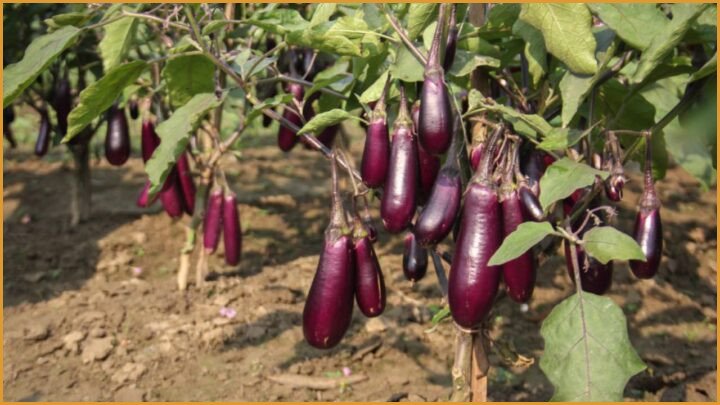GEAC Bt Brinjal – India’s journey towards agricultural innovation has always been tightly interwoven with the need for food security, environmental sustainability, and economic viability. One of the most debated developments in this space has been the introduction of genetically modified (GM) crops, especially Bt Brinjal. While supporters hail it as a revolutionary step to combat pests and boost yields, critics raise concerns about biosafety, ecological balance, and long-term health effects.

At the core of this decision-making process lies the Genetic Engineering Appraisal Committee (GEAC) — a regulatory body under the Ministry of Environment, Forest and Climate Change (MoEF&CC), which plays a crucial role in the approval and monitoring of GM crops in India. Formed as part of the Rules for the Manufacture, Use/Import/Export and Storage of Hazardous Microorganisms/Genetically Engineered Organisms or Cells (1989), GEAC’s job is not just administrative; it is at the heart of one of the most sensitive debates in Indian agriculture.
In recent years, Bt Brinjal has become the face of the GM crop debate in India. Developed to resist the Fruit and Shoot Borer (FSB), Bt Brinjal promises higher yields and reduced pesticide use. But despite scientific backing and successful trials, its commercial release remains suspended in India due to environmental, health, and ethical concerns. However, understanding how GEAC works—its structure, approval process, evaluation protocols, and its interaction with other government departments—is essential to decode how and why such decisions are made.
This article breaks down the role of the GEAC, the approval journey of GM crops like Bt Brinjal, the risks and benefits involved, and the current regulatory environment that shapes India’s biotechnology landscape.
What Is the Genetic Engineering Appraisal Committee (GEAC)?
The GEAC is India’s apex body for granting approval to GM organisms and products. It ensures biosafety while facilitating scientific innovation.
- Functions under the Ministry of Environment, Forest and Climate Change (MoEF&CC)
- Mandated by the 1989 Environment Protection Act rules
- Comprises scientists, environmentalists, agriculture experts, and government officials
- Grants approval for large-scale trials, commercial release, and import/export of GM organisms
- Monitors environmental and health safety risks associated with GM crops
- Can issue directives, suspend or cancel approvals based on risk reports
Members and Structure of GEAC
The GEAC’s membership includes a wide spectrum of scientific and administrative experts to ensure balanced and informed decisions.
| Member Type | Number of Representatives | Examples |
|---|---|---|
| Ministry Representatives | 3 | MoEF&CC, MoA, DBT |
| Scientific Institutions | 4 | ICAR, ICMR, CSIR, IARI |
| Environmental Experts | 2 | NGO or ecological scientists |
| Health & Safety Specialists | 2 | Public health & biosafety |
| Industry Representation | 1 | Biotech sector advisor |
| Legal Expert | 1 | Environmental legal consultant |
| Chairperson | 1 | Appointed by MoEF&CC |
| Member Secretary | 1 | Official from DBT or MoEF&CC |

Bt Brinjal: Why Is It Controversial?
Bt Brinjal is genetically modified to express a toxin derived from Bacillus thuringiensis, targeting a specific pest. However, its journey in India is marred with opposition and legal halts.
- Intended to reduce the use of chemical pesticides
- Increases brinjal yield by controlling Fruit and Shoot Borer (FSB)
- Approved by GEAC in 2009 for commercial cultivation
- Opposed by farmers’ groups, civil society, and some state governments
- A moratorium was imposed in 2010 by the Ministry of Environment
- Concerns over biodiversity, seed control by multinationals, and health
Key Differences Between Bt and Traditional Brinjal
| Feature | Traditional Brinjal | Bt Brinjal |
|---|---|---|
| Pest Resistance | Low | High (due to Bt gene) |
| Pesticide Usage | High | Significantly lower |
| Yield | Varies | Generally higher |
| Seed Control | Public & private | Mostly private sector |
| Trial Data Transparency | Open | Often questioned |
| Public Perception | Neutral to positive | Controversial |
Regulatory Steps for Approving GM Crops in India
Approval of GM crops involves multiple evaluations and consultations to ensure safety and efficacy.
- Step 1: Laboratory development and confined field trials
- Step 2: Biosafety assessments by RCGM (Review Committee on Genetic Manipulation)
- Step 3: Submission to GEAC for environmental clearance
- Step 4: Large-scale field trials with monitoring
- Step 5: GEAC approval recommendation
- Step 6: Final approval or moratorium by MoEF&CC
Regulatory Authorities Involved
Each regulatory body handles a specific role in the GM approval process.
| Authority | Function |
|---|---|
| RCGM | Biosafety testing during lab/field trials |
| GEAC | Final approval for environmental release |
| MoEF&CC | Issues notification or moratorium |
| ICAR | Conducts independent trials and evaluations |
| State Governments | Can allow or ban GM trials in their states |

Key Benefits and Concerns of Bt Brinjal
Bt Brinjal brings promises of yield and pest resistance, but not without some serious concerns.
- Benefits:
- Reduces pesticide use by up to 80%
- Saves production cost for small-scale farmers
- Reduces post-harvest losses
- Increases market shelf life
- Can help in tackling food insecurity
- Concerns:
- Long-term health impact data is limited
- Cross-pollination with native varieties
- Seed control by private corporations
- Lack of clear labelling policy
- Risk to organic and export markets
Global Scenario of GM Brinjal
While India halted Bt Brinjal, other countries have embraced or rejected it in different ways.
| Country | Status of Bt Brinjal | Remarks |
|---|---|---|
| Bangladesh | Approved & Commercialized | Cultivated by over 65,000 farmers |
| Philippines | Field trials ongoing | Public-private research collaboration |
| USA | No Bt Brinjal approved | GM eggplants not commercialized |
| EU Countries | GMOs largely banned | Strong public opposition |
| India | Moratorium in place | Ongoing public and legal debates |
GEAC’s Evaluation Criteria for Approving GM Crops
GEAC has defined parameters that must be met for GM crop approval. These criteria ensure that human health, biodiversity, and ecological systems remain protected.
Scientific and Environmental Assessment Parameters
- Toxicology and allergenicity
- Impact on soil and non-target organisms
- Gene flow and stability
- Pest resistance management
- Yield assessment and agronomic performance
Socio-Economic and Ethical Considerations
- Farmer seed sovereignty
- Impact on indigenous crops and local economies
- Public opinion and transparency
- Ethical concerns regarding biotechnology ownership
Departmental Contact Details for GEAC and Related Agencies
If you want to raise concerns, seek clarifications, or access public reports on GM crop assessments, contact these official channels:
| Department Name | Contact Person | Phone Number | Website | |
|---|---|---|---|---|
| Genetic Engineering Appraisal Committee | Member Secretary | geac-secretary@moef.gov.in | +91-11-24363963 | http://geacindia.gov.in |
| Ministry of Environment, Forest and Climate Change | Public Relations Officer | env.min@nic.in | +91-11-24695136 | http://moef.gov.in |
| Department of Biotechnology (DBT) | Grievance Officer | info.dbt@nic.in | +91-11-24362960 | http://dbtindia.gov.in |
| Indian Council of Agricultural Research | R&D Division | icar@nic.in | +91-11-25843301 | http://icar.org.in |
| Review Committee on Genetic Manipulation | RCGM Chairperson | rcgm.dbt@nic.in | +91-11-24362882 | http://dbtindia.gov.in/rcgm |
FAQs
1. What is the current status of Bt Brinjal in India?
Bt Brinjal is under a moratorium since 2010 and not approved for commercial cultivation in India.
2. Who approves GM crops in India?
The Genetic Engineering Appraisal Committee (GEAC) under MoEF&CC is the main body responsible for approval.
3. Why did Bangladesh approve Bt Brinjal while India did not?
Bangladesh chose to commercialize Bt Brinjal after evaluating its benefits and safety data, while India placed a moratorium due to public concerns.
4. Can states ban GM crop trials?
Yes, state governments in India have the right to deny field trials even after central approval.
5. Are GM crops safe for human consumption?
Scientific studies suggest they are safe, but long-term health studies are limited and still debated.
How does the GEAC impact GM crop approval in Indian agriculture?
It assesses and approves genetically modified crops like Bt brinjal.
What is the significance of GEAC in regulating GM crops in Indian agriculture?
GEAC evaluates and approves genetically modified crops for cultivation in India.
How does GEAC contribute to decision-making on Bt Brinjal cultivation in India?
GEAC assesses the safety and efficacy of genetically modified crops.
What factors influence the GEAC's approval process for GM crops in India?
Scientific evidence, environmental impact assessments, and public consultations guide GEAC decisions.






